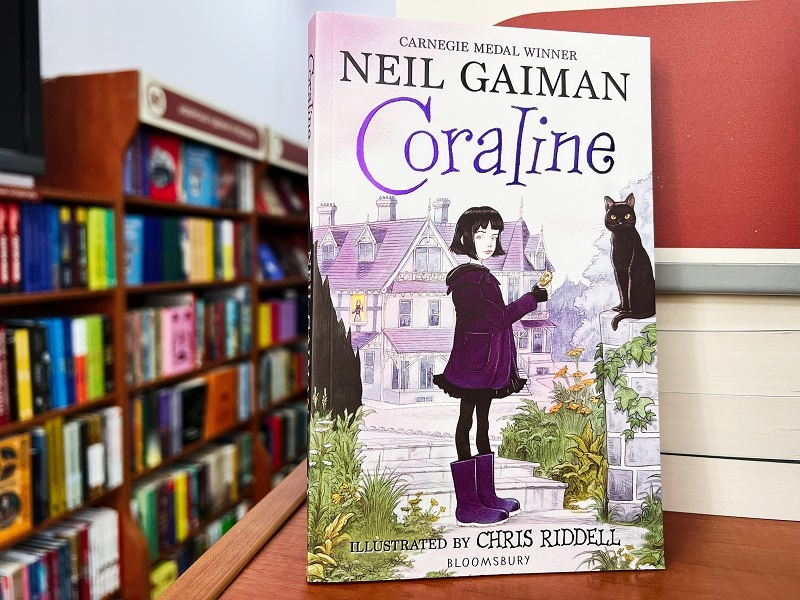
In the realm of modern storytelling, Neil Gaiman is one of the most captivating authors of our time. Ranging from elaborate fantasies to deeply philosophical graphic novels, Neil Gaiman's top works have had a powerful impact on both literary fiction and popular culture. His unique voice occupies that hazy line between myth and reality and often allows for utterly immersive elements in his writing (they simultaneously feel ancient and contemporary). Gaiman's books have built a stunning body of work and provide a list that references storytelling excellence and inventive creativity scattered across genres.
By the end of the first few pages of any of his books, readers already sense the voice that helped to put Neil Gaiman books on the map globally. From the powerful de-constructions of the fantastical that morph into childhood hells of our experience in the Books of Magic to the fan-fare of contemporary fantasy in America Gods, Neil Gaiman's writing is magical and thoughtful. This book examines the body of work by Neil Gaiman by looking at the novels and tales that contributed (past and present) to his inspiring career.
Pacing the top of most lists of Neil Gaiman's greatest work, American Gods is a contemporary epic of mythic dimensions. Mixing Americana and prehistorical lore, the novel tells of Shadow Moon, a released convict drawn into a magical war between old gods and new. This novel exhibits Neil Gaiman's exercise of the full power of storytelling, intermingling cultures and characters, and cosmological stances in a thick and colorful weave.
What Makes It Significant:
Another long-time classic by Neil Gaiman, Neverwhere takes readers to "London Below," a shadowy version of the city streets. Originally written as a BBC television series, the novel gave the opportunity for Gaiman to explore the characters and places further.
What makes it significant:
From Page to Panel: Unpacking Neil Gaiman Books of Magic and Other Graphic Novels
Arguably the most legendary of all Neil Gaiman books, The Sandman turned graphic novels into high art. Based on Dream (otherwise known as Morpheus), one of the seven Endless, this series revolutionized the potential of comic storytelling.
The reason why it's iconic:
The Sandman remains a necessary read because of its grounded characters, convoluted multiverse, and solidifies Neil Gaiman's ability to master tone, theme, and philosophy throughout much of his work.
This miniseries introduced Timothy Hunter, a boy who will become the world's greatest magician. A potent mixture of coming-of-age story and metaphysical quest, Books of Magic continues to be compared to later works such as Harry Potter.
Why readers love it:

While technically a children's book, Coraline has frightened and fascinated readers of all ages. This ghostly story about a young girl who discovers a parallel universe version of her life—complete with spooky "other" parents—delves deeply into abandonment and identity fears.
Why it's a fan favorite:
Based off of The Jungle Book, this story is a tale of a boy named Nobody "Bod" Owens who is raised by ghosts in a graveyard after the murder of his family. A wonderful meld of gothic themes with childhood fancy, it is truly one of Neil Gaiman's best works.
Reasons to read:
This collection features 30 short stories and poems that highlight Gaiman's versatility and imagination. From recast myths to contemporary horror, Smoke and Mirrors gives readers a sampling of Gaiman's dark visionary realm.
Some of the popular stories include:
Another great read from the Neil Gaiman books, Fragile Things is a collection of award-winning stories probing the boundary between nightmares and dreams.
Why it's worth checking out:
A laugh-out-loud but tear-jerking story of an angel and demon teaming up to stop the apocalypse was undeniably a work of art across multiple genres. Spanning satire, theology, and pop culture, Good Omens is one of Neil Gaiman's most beloved books.
What makes it so great:
This novel is a spiritual companion to American Gods and follows the life of Fat Charlie Nancy, son of the West African spider god Anansi. Full of folklore and humor, Anansi Boys ranks among Neil Gaiman's strongest books for its colorful characters and lighthearted spirit.
Highlights:
Whether you're reading Books of Magic, delving into the world of Sandman, or reading one of his solo novels, Neil Gaiman's greatest works contain a lasting appeal. His stories do not merely entertain; they question fundamental human issues—of belief, of identity, of power, of death. Neil Gaiman's writing combines humor, darkness, mythology, and morality in a way that transcends traditional genre boundaries.
Why Gaiman is distinctive:
Why Gaiman stands out:
If you're just finding Neil Gaiman, it may be overwhelming to know where to start. Here is a brief primer:
No matter where your starting point, you can't go wrong with the best of Neil Gaiman - you'll journey through worlds as strange as they are familiar.
This content was created by AI